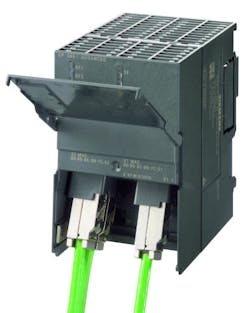Fieldbus and Ethernet: Complementary, Not Competitive
As Ethernet continues its rapid advance into manufacturing, a place where it was not so long ago considered a technology not well suited for industrial applications, there has been a great deal of discussion and confusion about the continuing role of fieldbus. In the Automation World feature article, The Race to Ethernet, the roles both technologies play in modern manufacturing is discussed in great detail against a backdrop of reader responses to a survey focusing on the use of industrial Ethernet and fieldbus technologies.
To help further enlighten the discussion about the complementary roles of Ethernet and fieldbus in manufacturing, Siemens recently released a white paper, “Why Now is the Time to Migrate to Industrial Ethernet”. Judging from the title, it may seem as if this paper is all about ditching fieldbus in favor of Ethernet, but that is not the case. The white paper details the different roles both technologies play.
The paper explains that fieldbus is “a term used to describe a group of industrial networking protocols as defined by IEC 61158” and commercialized in the 1980s to provide real-time distributed control of the components comprising an industrial system. Ethernet, which was also commercialized in the 1980s, is a digital networking system originally designed to operate in near real-time. “It has since been adapted for use in industrial data communications and control. At the same time, it’s become the world’s de facto networking standard for wired and wireless applications. In fact, advancements in Ethernet over the years have minimized its latencies to such an extent—below human perception levels of 21 milliseconds—that it’s now used to transport voice and video in near real-time.”
To highlight how fieldbus and Ethernet technologies fit into the control hierarchy of automated industrial systems, the Siemens paper points out that human machine interface (HMI) systems communicate via Ethernet with a middle layer of PLCs, which in turn are linked via fieldbus technology to their various sensors, motors, switches and other devices.
Further clarifying the historical role of fieldbus at the device layer, the paper cites two main reasons that fieldbus has been widely deployed in industrial process control:
1. The predecessor control technology to fieldbus, 4-20 mA current loop analog communications, required dedicated wiring between devices. According to the Siemens white paper, “This [dedicated wiring] got expensive and complicated quickly, as more devices needed control within industrial environments.”
2. 4-20 mA connections, although much simpler than fieldbus, can only transmit one parameter, while fieldbus can communicate several.
While maintaining that fieldbus will continue to play an integral role in control communications, the paper notes that there are a large number of industrial control requirements have “risen that are beyond fieldbus capabilities.” Some of the requirements listed by Siemens are:
• Wireless and fail-safe communication;
• More than one master in the same bus section;
• Web-based management;
• Redundancy through ring topology;
• More than 126 connections/nodes on the same bus;
• Graphical visualization and automatic topology detection;
• Very high transmission rates over long distances, without separate repeaters, and without concerns about speed, adaptation, reflection and data collisions;
• Transmission of large data volumes such as databases, images and files via the same cable;
• Easy energy management; and
• Complete access to the entire network, including remote access.
Of course, the paper does get into some detail about Profinet, —Siemens industrial Ethernet protocol of choice. The paper notes that Profinet uses Ethernet’s TCP/IP standards for non-time critical communications, like diagnostics, but adds deterministic real-time channels to achieve real-time communications (in as little as 31.25 microseconds).

